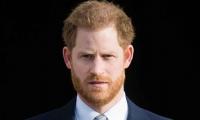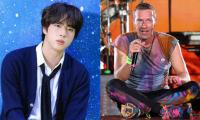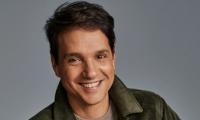It was 6:30 in the morning on April 15 when I heard my colleagues Andrea and Otero talking outside my bedroom. It was clear from the urgency in their voices that something serious had happened. When I went outside, Andrea told me that the Palestinian Red Crescent had called and we needed to get to work immediately. Israeli forces had stormed the Al-Aqsa Mosque compound in Jerusalem during morning prayers.
Andrea is an Italian emergency doctor and Otero is a Spanish intensive care doctor and anesthetist. I am a trauma surgeon. Together we form part of the MSF trauma team based in Hebron, in the Palestinian Territories. That Friday, together with two other MSF doctors, we set out to help assess and stabilise the people who had been injured.
Our team rushed to a trauma point close to the hospital to treat triage patients, where those with severe injuries were transported by ambulance from the mosque.
Within minutes, the first ambulance arrived. The patient had a large bleeding head wound where Israeli police had struck him. Then two more ambulances arrived. One of the patients was a young girl, shot in the back with a rubber bullet – blunt-force trauma that could have fractured her ribs or other bones. We checked her lungs with an ultrasound and luckily, they were fine. We moved on to another patient with a wound on his lower back. He had been hit with a baton and was in a lot of pain. He could not move his legs. We suspected a spinal fracture. After stabilising him, we decided to transfer him to the nearest hospital for an X-ray. We wondered how badly he must have been beaten.
Suddenly, the girl with the rubber bullet injury fell on the floor having lost consciousness. Her vital signs were normal, yet she shook like a leaf. She was having an anxiety attack. Otero gave her medicine to calm her. I thought about how horrible her experience must have been and how long the memories of the day’s violence would stay with her.
We saw another patient who was burned in the face by a stun grenade. This weapon is designed to produce a blind flash of light but when fired too closely can cause a terrible burn. Two more children arrived, one with a big cut on the head. Andrea took care of him, while Otero and I examined the other child with a wound very close to his right eye. He could not remember how he was injured. We suspected a fracture of the cheekbone and transferred him to the hospital.
At about 10am we received an update from the Red Crescent: the total number of injured people had reached 150. At least five were in critical condition and had been taken to an operating theatre to repair extensive damage to their faces after being shot by rubber bullets. These bullets, which often have a metal core, can disable, disfigure and even kill.
The patients kept on coming like waves. We tried to stabilise them as quickly as possible to empty the beds for new arrivals. Sometimes it seemed like the ambulances had stopped arriving, then suddenly two or three would come at once.
By 11:30am the flow of patients had finally ebbed. All of the injured people had been taken care of and it was time to have a break. Andrea, Otero and I decided to go for a coffee close to the field hospital on the Mount of Olives. On the way, an incredible image appeared in front of our eyes: a wonderful view of Jerusalem. We stood there and wondered how a place so magnificent could present the scenes of violence we had witnessed just a few hours earlier.
No matter how many trauma patients you see or war zones you work in, every time you treat a person who has been violently harmed by another human being, it is impossible not to feel a deep pain in the soul. The Roman proverb from Plautus, two thousand years ago, was right: “Homo homini lupus” – man is a wolf to man.
This article was originally published as: ‘The storming of Al-Aqsa: ‘The patients kept on coming like waves’’.
Courtesy: Aljazeera.com
Data, today, defines how we make decisions with tools allowing us to analyse experience more precisely
But if history has shown us anything, it is that rivals can eventually unite when stakes are high enough
Imagine a classroom where students are encouraged to question, and think deeply
Pakistan’s wheat farmers face unusually large pitfalls highlighting root cause of downward slide in agriculture
In agriculture, Pakistan moved up from 48th rank in year 2000 to an impressive ranking of 15th by year 2023
Born in Allahabad in 1943, Saeeda Gazdar migrated to Pakistan after Partition







